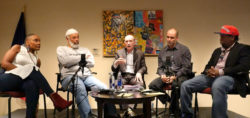Events
Towards a Culture of Collaboration
A conversation with New Orleans photographers and culture bearers
Published: May 4, 2016
Last Updated: August 29, 2018
Louisiana Cultural Vistas, Zack Smith Photography, and Louisiana Pizza Kitchen French Quarter hosted a community conversation at the Louisiana Humanities Center March 24, 2016 to explore the questions around responsibility and cultural sensitivity. Big Chief Juan Pardo of the Golden Comanche Mardi Gras Indian tribe and musician and videographer Voice Monet joined photographers Zack Smith and Eric Waters to discuss these themes in front of a standing-room-only crowd. Watch the video and stay tuned for more conversations on this topic.
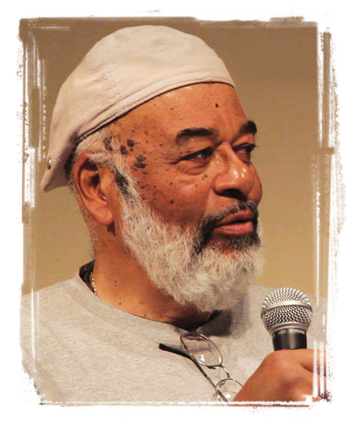 “It’s very chaotic now in the streets. There are a lot of people who are shooting with their iPhones, iPads, point-and-shoot cameras. There’s nothing wrong with that. I’m the kind of photographer who thinks everybody’s photo is important to them… What I wanted to speak on was gratitude and respect. Back in the day when I was shooting, there was a lot of respect for the culture. There was a lot of gratitude that someone in the culture allowed you to take their picture. And I don’t see that now. How would you approach Elton John or Beyoncé or someone of that ilk? You wouldn’t just run up into their face to take a picture or tell someone who’s with them to get out of the way so you could take their picture. I don’t see that respect for the Mardi Gras Indian culture nor the second line clubs. All we see as photographers is, it’s Sunday, there’s something to be photographed in the culture. What photographers need to do and should do is pay respect. Honor those persons like you would Elton John. These guys are our celebrities. These are our Beatles. We should show them the same respect…. These guys are artists. They are walking, performing sculptors. We should honor them. It takes these guys 3,500 to 5,000 hours every year to create a new suit. If you’re going to photograph a culture, try to get to know the culture and the people in the culture.”
“It’s very chaotic now in the streets. There are a lot of people who are shooting with their iPhones, iPads, point-and-shoot cameras. There’s nothing wrong with that. I’m the kind of photographer who thinks everybody’s photo is important to them… What I wanted to speak on was gratitude and respect. Back in the day when I was shooting, there was a lot of respect for the culture. There was a lot of gratitude that someone in the culture allowed you to take their picture. And I don’t see that now. How would you approach Elton John or Beyoncé or someone of that ilk? You wouldn’t just run up into their face to take a picture or tell someone who’s with them to get out of the way so you could take their picture. I don’t see that respect for the Mardi Gras Indian culture nor the second line clubs. All we see as photographers is, it’s Sunday, there’s something to be photographed in the culture. What photographers need to do and should do is pay respect. Honor those persons like you would Elton John. These guys are our celebrities. These are our Beatles. We should show them the same respect…. These guys are artists. They are walking, performing sculptors. We should honor them. It takes these guys 3,500 to 5,000 hours every year to create a new suit. If you’re going to photograph a culture, try to get to know the culture and the people in the culture.”
—Eric Waters, photographer
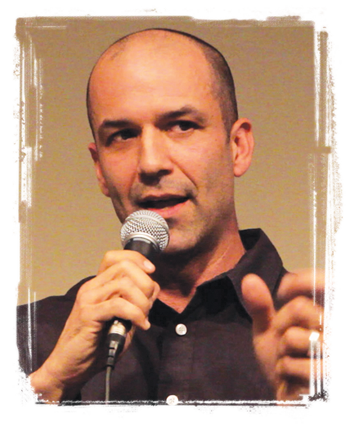 “If I know the story, the photograph is going to be better. I started to see more iPhones and iPads than Indians, and more cameras than culture. That’s inevitable. In the age we’re at right now, we want to document everything around us. We want to post everything; we want to tell everybody what we’re seeing. But when it comes to documenting such a rich, unique, ritual-based culture as New Orleans — I’m talking about the music, the musicians, the [social] clubs and the Indians—the photographers who know what they’re doing and want to get the story, I feel, have a greater responsibility than any other photographer in this country, maybe even the world. As Eric was saying how unique this culture is — just because it’s unique, that makes us need to do a better job. So I see these iPhones and iPads, you know what, half of them are probably family members taking pictures for family albums, for iPad videos. And that’s awesome, that’s the story. But there’re a lot of people who come in within no intention to give back… Instead of beat the dead horse and ride the elephant around the room, how do we take a step in the right direction and create a new culture of collaboration by educating photographers?”
“If I know the story, the photograph is going to be better. I started to see more iPhones and iPads than Indians, and more cameras than culture. That’s inevitable. In the age we’re at right now, we want to document everything around us. We want to post everything; we want to tell everybody what we’re seeing. But when it comes to documenting such a rich, unique, ritual-based culture as New Orleans — I’m talking about the music, the musicians, the [social] clubs and the Indians—the photographers who know what they’re doing and want to get the story, I feel, have a greater responsibility than any other photographer in this country, maybe even the world. As Eric was saying how unique this culture is — just because it’s unique, that makes us need to do a better job. So I see these iPhones and iPads, you know what, half of them are probably family members taking pictures for family albums, for iPad videos. And that’s awesome, that’s the story. But there’re a lot of people who come in within no intention to give back… Instead of beat the dead horse and ride the elephant around the room, how do we take a step in the right direction and create a new culture of collaboration by educating photographers?”
—Zack Smith, photographer
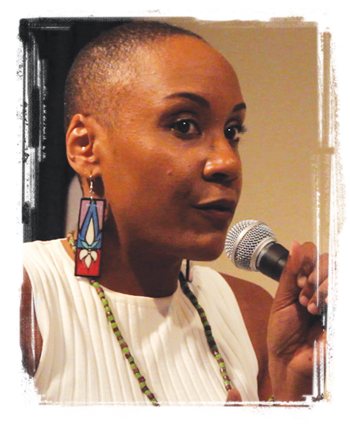 “A couple of years ago my production company was contracted to film Yellow Pocahontas Tribe on Mardi Gras day and then for St. Joseph’s Night. We were contracted by an organization out of Oakland that had granted grant money to the tribe and I was referred word-of-mouth. It was a nice contract, but before I could say yes, I had to make direct contact with the chief of Yellow Pocahontas and get clearance from him first, what was OK, regardless of what the organization that was hiring me wanted. I also explained that to the organization. I let them know that culturally it was a very sensitive subject, and that within my community, I had to reach out to this tribe directly and get an OK from them, and then I could give them a quote on what I would be able to film and shoot. When I did reach out to the chief, one of the first points I made to the chief was that, whatever I shot, they would have first access to, and to be able to use in whatever way they saw fit. I also made that part of the contract with the people that hired me.”
“A couple of years ago my production company was contracted to film Yellow Pocahontas Tribe on Mardi Gras day and then for St. Joseph’s Night. We were contracted by an organization out of Oakland that had granted grant money to the tribe and I was referred word-of-mouth. It was a nice contract, but before I could say yes, I had to make direct contact with the chief of Yellow Pocahontas and get clearance from him first, what was OK, regardless of what the organization that was hiring me wanted. I also explained that to the organization. I let them know that culturally it was a very sensitive subject, and that within my community, I had to reach out to this tribe directly and get an OK from them, and then I could give them a quote on what I would be able to film and shoot. When I did reach out to the chief, one of the first points I made to the chief was that, whatever I shot, they would have first access to, and to be able to use in whatever way they saw fit. I also made that part of the contract with the people that hired me.”
—Voice Monet, videographer and musician
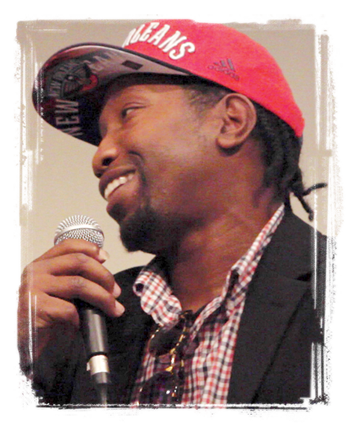 “Understand that what we do is spiritual and understand that when you interrupt the spirit, you will get a reaction. Because when I do it, I am extremely intense, I am extremely serious, and that year of my life — I’m wearing it.
“Understand that what we do is spiritual and understand that when you interrupt the spirit, you will get a reaction. Because when I do it, I am extremely intense, I am extremely serious, and that year of my life — I’m wearing it.
There are tons of shots of the palm of my hand. I promise you: shots of Golden Comanche are few and far between. There’s a reason for that. My Wild Man [one of the traditional roles in a tribe], when I say, “Clear a hole,” I mean that. Not taking anything from another tribe, but we’re not walking around, we’re not stepping around, we’re doing none of that. It’s not meant to come off as this bad guy or to injure anyone — that’s not the goal. But it’s a warrior culture. These guys are doing battle through song, dance, and art — the whole nine yards. There’s energy levels going and, for goodness sakes, there’re drums. That energy, you can’t bottle it up. And you can’t just get there and “I wanna get here” and you’re in the middle of a feud. It’s not even wise.”
—Big Chief Juan Pardo of Golden Comanche Mardi Gras Indians
